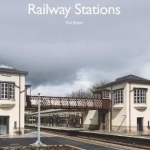Railway Stations
BookThis item doesn’t have any media yet
2017 | History & Politics
From the architecturally significant to the most austere, railway stations of all shapes and sizes were one of the most prominent features of life in towns and villages all over Britain until post war modernisation and closures swept many away. The development of the station began in the 1830s, as railways themselves were in their infancy, and it took some years for individual railways and their engineers to evolve a distinct style, perfected by the end of the nineteenth century. The largest and most imposing stations were situated in large towns and cities, and most impressive of all were the London termini: terminals like Kings Cross, Liverpool Street, Paddington and Waterloo handled and (still handle) millions of long distance and commuter travellers every year. Elsewhere, larger provincial towns and cities like Birmingham, Manchester and Glasgow often had more than one important station handling express, cross-country and suburban traffic. Away from urban areas, the country station, especially those on branch lines, was an important part of rural life providing a vital link for the movement of both goods and passengers to and from the country.
The station was more than a grand or imposing facade; within its precincts there were all manner of facilities provided by the railway for its passengers - waiting rooms, bookstalls, refreshment rooms, luggage and lavatories. Close by, in all but the largest stations were goods depots built to undertake the rather less glamorous and often more profitable job of handling freight.
Related Items:
| Published by | Amberley Publishing |
| Edition | Unknown |
| ISBN | 9781445669007 |
| Language | N/A |
Images And Data Courtesy Of: Amberley Publishing.
This content (including text, images, videos and other media) is published and used in accordance
with Fair Use.
